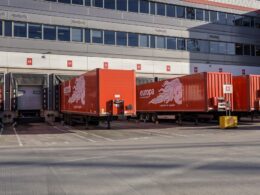Logistics is complex—the last mile particularly so—which is why when something isn’t broken, the natural impulse is not to fix it. For businesses like food distributors, janitorial suppliers, field service companies, and other businesses who make the same stops at the same sites week in and week out, relying on fixed delivery routes often falls into precisely that category—the risks of upending routes that are getting the job done seem to outweigh the potential benefits of adjusting them.
Here’s the rub: fixed routes often don’t work as well as they seem. If you were really making the same stops at the same times at the same locations every week, updating your routes regularly would be somewhere between a luxury and a waste of time—but for most businesses, life is a lot more dynamic than that. Customers have unpredictable off-day orders, or they fail to order on the expected day. Volumes change, and so do order mixes. Most B2B delivery organisations actually have a huge amount of week-to-week variation in where, when, and what they need to deliver. That’s why, from a logistics perspective, it may be time to switch away from fixed routes.
Static vs Dynamic Routing
Traditionally, the alternative to fixed (aka static) routing has been dynamic routing. While static routing involves building a route once and then having your drivers or delivery personnel travel that same route week in and week out, dynamic routing means creating new routes from scratch every day based on that day’s orders.
Thanks to technological improvements that make dynamic routing faster and more flexible, it’s become the go-to in industries like retail where customers order sporadically, rather than placing recurring orders that have to be fulfilled every week or month. Essentially, these businesses have to more or less start from scratch every day anyway, so if they can do that in a way that optimises routes to maximise capacity and hit particular time windows, so much the better.
Obviously, this paradigm shift hasn’t occurred in the world of B2B deliveries. Why? Because rebuilding routes from scratch every day would cause chaos. Customers who want to be the first stop on a given route wouldn’t be guaranteed to have their desired position. Customers who like to see the same driver or technician every week would also be disappointed. Essentially, whatever gains you made in efficiency you’d stand to lose in customer service.
Why Fixed Routes Don’t Work
Dynamic routes don’t really work for B2B deliveries, which in most people’s minds leaves static routing as the only option. But the catch is that static routing doesn’t work either. Like we said above, no one really delivers the same things to the same accounts at the same times week in and week out, and B2B delivery organisations are just as dynamic on balance as their B2C counterparts—they just lack the tools to reflect that dynamism in the way they plan and execute routes.
In practice, this results in most organisations in this situation simply rolling out their fixed route plans every week and doing their best to eyeball the changes. But as rapidly changing order mixes become increasingly common and delivery costs like fuel and driver hours increase, this kind of approach lacks the efficiency required for success. Drivers wind up either spending longer on job sites than expected because they’re delivering higher volumes than expected, causing customers further down the route to experience delays, or they have to build buffer time in between stops to make sure they’re not showing up during a restaurant’s lunch rush or a bar that isn’t open for receiving deliveries yet. Either way, efficiency goes out the window.
Dynamic routes don’t work. Neither do fixed routes. So what are B2B delivery organisations supposed to do? The answer lies in a hybrid approach.
How Hybrid Routing Improves Efficiency
To get the stability and dependability that comes with fixed routes in addition to the flexibility and cost efficiency that B2C businesses get out of dynamic routing, you need to find a way to combine the two approaches. This is where hybrid route optimisation comes in. In a nutshell, this technique involves building fixed skeleton routes with the clients that are highly important and highly likely to order, then leveraging dynamic routing for everything else once the final order mix for a particular day has come in.
By combining the two approaches to routing in this way, you can ensure that the businesses that absolute need to get their orders at the same time or in the same route position every week are happy—while leveraging the flexibility you have around smaller accounts or those who order less frequently to build in efficiency and increase your capacity utilisation. This gives you the best of both worlds: you’re able to provide customer service that reflects your commitment to your customers, all while effectively fighting off rising delivery costs. If you’re still using fixed routes, the reward for reconsidering at this point far outweighs the risks.
Alex Buckley, General Manager to lead operational growth for EMEA and Asia Pacific at DispatchTrack.














